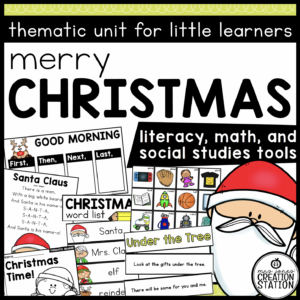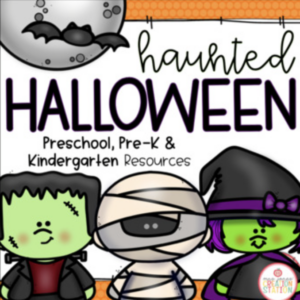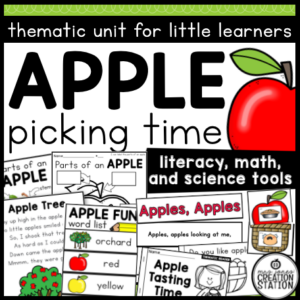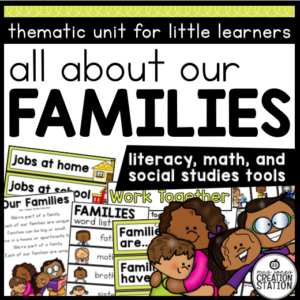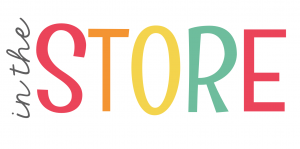Menu
How easy would your first day of school be if it was ALL planned for you? Sit back and enjoy a stress free first day when you use these First Day of School activities! This resource is filled with literacy, math and social studies activities to guarantee your first day of school is a success!
This resource includes over 150 pages of activities to introduce your new students to your classroom. Engaging mini lessons focus on how to treat classmates, how to take care of classroom supplies and how to be a problem solver.
Math and literacy centers are included. Use them in small groups or to teach how to work together in groups. These activities can also be a quick assessment to show you, the teacher, what your students already know before jumping into the year.
Here is what you’ll get:
-Editable Lesson Plan template
-Word Wall Cards
-Tracing pages
-Interactive Poem
-Thematic Plans —>(books not included)<—
-Three Math Centers
-Three Literacy Centers
-Bonus Center
This unit was recently updated, so it can be used year after year! Print, cut and laminate. Store the books with this unit in a filing cabinet or bin for quick access when you need it!
Buy the BUNDLE and SAVE! You can purchase this resources in the Thematic Activities for Little Learners Bundle and the Little Learners Mega-Bundle!
“This is an amazing resource. I love the lesson plan suggestions. The songs are great! I highly recommend this especially for teachers just starting out. Thank you!” -Tammy F
“For the first week of school we did this unit and it is so complete! Even down to teaching them what it means to feel safe in the classroom and how they can contribute to another classmates safety was awesome. I loved the little pocket chart activities and centers, introducing the tools used in the classroom, etc. ” -Renee B.
“This resource has SO many great pieces to it. It will definitely boost your confidence in beginning the school year with kindergartners. It’s a “fool proof” tool. I love this resource and have used it for several years.” -Carrie B.
Chicka Chicka Boom Boom Activities
First Week of School Activities
Print many upper- and lowercase letters.
Follow words from left to right, top to bottom, and page by page.
Write numbers from 0 to 20. Represent a number of objects with a written numeral 0-20 (with 0 representing a count of no objects).
Developing and sustaining foundational language skills: listening, speaking, discussion, and thinking–oral language….The student expects to: listen actively and ask questions to understand information and answer questions using multi-word responses.
TEKSMA.K.2.B
The student is expected to: read, write, and represent whole numbers from 0 to at least 20 with and without objects or pictures.
WEBSITE | FACEBOOK | INSTAGRAM | PINTEREST | TEACHERS PAY TEACHERS
© Mrs. Jones’ Creation Station, Inc
SaveSave
How can I see what is new in the MJCS store?
Be the first to know about new discounts, freebies, and new products. You can also subscribe to our newsletter to receive access to resources only available to MJCS subscribers, as well as, special offers and ideas!
How can I get credit for my TpT purchases?
Go to your account button at the top of the page. Under the “Buy” section, click “My Purchases “. Beside each purchase you’ll see a Provide Feedback button. Simply click the button and you will be taken to a page where you can give a quick rating and leave a comment for the product. Each time you give feedback, TpT gives you feedback credits that you use to lower the cost of your future purchases. Please leave detailed feedback for each resource, so we are able to create better resources for teachers and students.
How can I find a certain activity in a large PDF file?
If the resource you purchase has a variety of activities compiled into one PDF find the table of contents and click on the activity title. This should take you to that specific activity in the resource.
What can I do if I have a question about a resource?
If you have any questions regarded a resource before purchasing please email me at mrsjonescreationstation[at]gmail.com. Once you have purchased the resource you may use the “Product Q and A” tab on the product page to ask a question, as well.
How do I know if a resource has been updated?
Go to your account button at the top of the page. Under the “Buy” section, click “My Purchases “. Choose to “sort by: recently updated” to see what resources have been updated since you downloaded them last. You can download any updates from there. If a file has been updated, you will see a notification under the resource that says “Newly Updated – Download for Free!”
This item is a paid product created by Mrs. Jones’ Creation Station, Inc. Copying any part of this product, redistributing, selling or placing it on the internet in any form is strictly forbidden and is a violation of the Digital Millennium Copyright Act (DMCA). Thank you for respecting our work!
YES, YOU CAN…
NO, YOU CAN’T…
Click here for a detailed post with step-by-step directions.
You will need to download fonts specified in the resource and install it on your computer before downloading the editable file.
Install the most recent version of Adobe Reader onto your computer. If you have any problems editing, viewing or printing a file make sure your Adobe Reader is updated.
Now you can download the file to your computer. Once the file has downloaded open in Adobe Reader. You should be able to view the editable fields and the text should match the product description. If you have any problems editing the file, make sure you have followed the directions above and then contact me at mrsjonescreationstation[at]gmail.com
